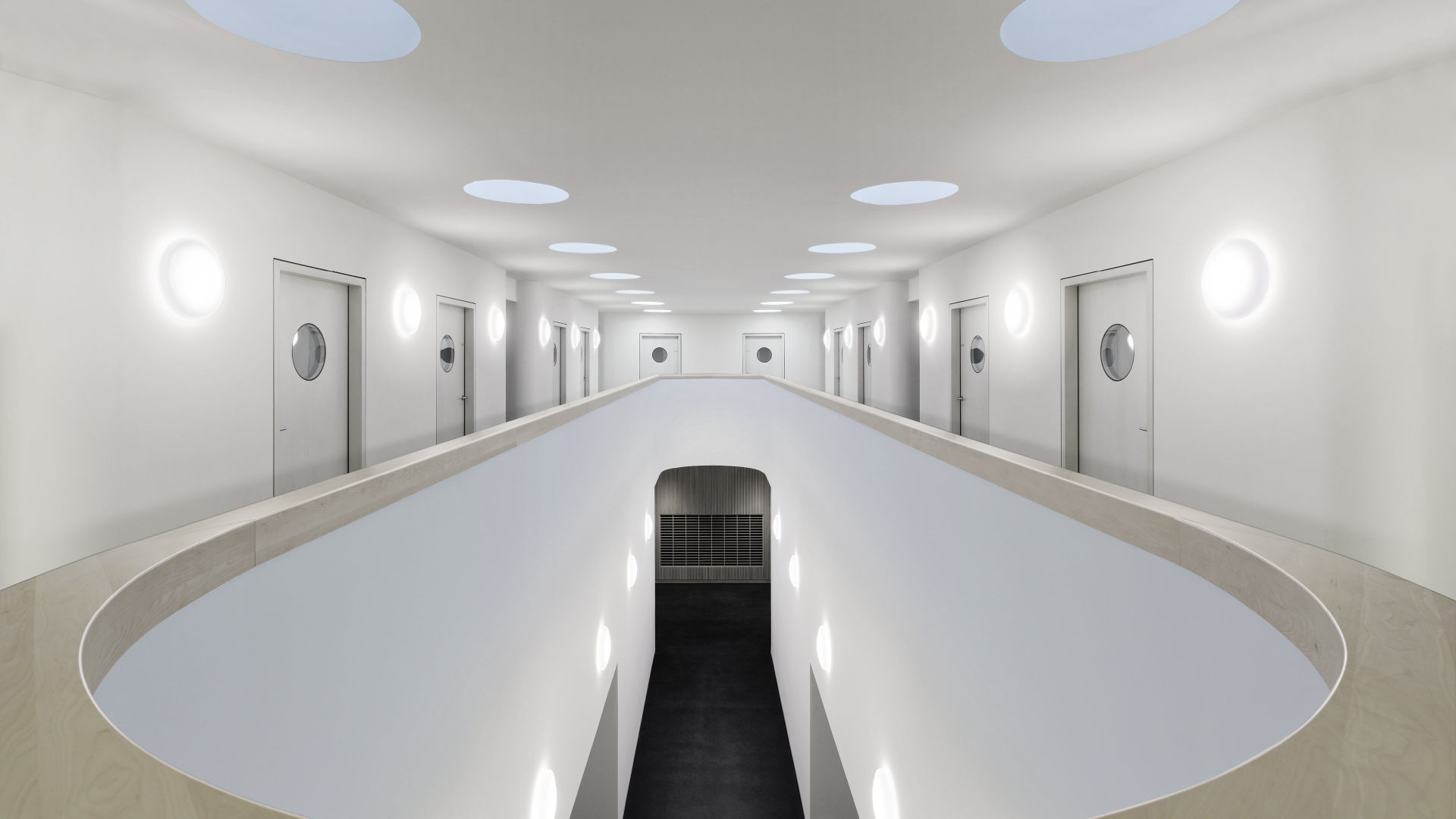
Appropriate lighting that creates a sense of safety in the corridors of educational facilities provides accessibility, enables quick orientation, indicates escape routes during emergencies and highlights information areas.
The corridors and staircases are the arteries of a building, and help users to find their way around the facility. The lighting draws on the architecture and becomes an functioning part of the building, thanks to the interaction of shapes and light.
Alongside basic illumination, variety is created by indirect light, using ceilings and walls as reflection surfaces.
When selecting suitable luminaires from the product portfolio, the amount of daylight should also be taken into account – different control options can turn on the lights only as needed. During declining daylight hours or when people are present, exit lighting is enhanced. This satisfies energy saving aspects without compromising on safety.
When modernising existing buildings, replacing the luminaires offers significant potential for improvement, thanks to greater energy efficiency and control options.

Precise illumination using optical systems of the highest lighting quality
Maximising the efficiency of light deflection can further improve the illumination of corridors in educational facilities. These surface-mounted ceiling luminaires feature patented BEGA Vortex Optics® technology. The twisted reflectors made of pure aluminium enable perfect light deflection with excellent visual comfort, thanks to intensive light bundling. The corridor and reflective flooring are illuminated with precision, as soon as the daylight entering the space no longer suffices.

Soft, uniform light from unshielded luminaires, attractively arranged in rows for basic illumination
The arrangement of the unshielded luminaires in rows draws on the length and symmetry of the corridor. Here too, the lighting can supplement the available daylight or replace it after dark. The soft, uniform light brightly illuminates the corridor – the luminaires are DALI-controlled, meaning they receive clearly defined, preset commands to provide dim, supplementary lighting or full lighting.

Illuminating extraordinary architecture in harmony with the effects of light
The satin matt floor of the corridor harmonises with the minimalistic yet impressive concrete walls: Meanwhile, the lighting not only provides basic illumination from the ceiling, but also utilises the effect of the light from the recessed wall luminaires on the floor. Even in areas like these, without natural daylight, the adequate glare-free lighting provides a feeling of safety and clear orientation.
Wide variety of lighting options and controls: flexible planning for different requirements is the central focus
The requirements for the interaction between impressively designed staircases or minimalistic, functional staircases and the accompanying lighting are high. Safety and highlighting of potential hazards, as well as adequate presentation of the architecture, all have a role to play in the illumination.
As the connection between different levels of the building, staircases must attract the attention of the user. With high-quality lighting, they can be highlighted in a way that draws attention, without further distractions.
Staircases offer a wide range of illumination options: these include light on the ceiling, wall luminaires with unshielded light, recessed wall luminaires at different heights, light on the steps or impressive pendant luminaires, to name but a few. They offer maximum design freedom when it comes to the rich and varied lighting of staircases in accordance with standards.
Different control options provide increased flexibility and allow architects, installers and lighting designers to attractively illuminate staircases, guide visitors, increase energy efficiency and respond to the level of foot traffic.
Our offer: DALI Training Our BEGA DALI Training offers an introduction to DALI in conveniently structured steps. The training covers the basics (definition, properties, prerequisites), concrete examples of circuit design, as well as configuration and control. For users who are just starting out or those in need of a refresher – BEGA’s DALI Training offers high-quality instruction in the basics and the finer points.
Are you interested in a DALI training course? We are here to help – just contact us via the channel of your choice.



